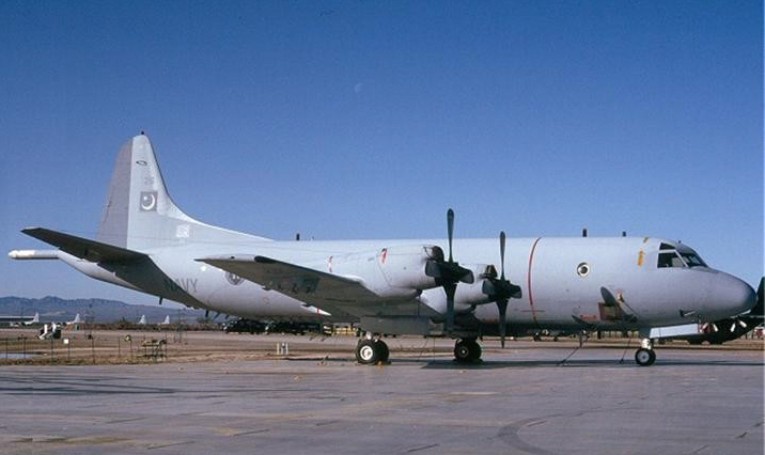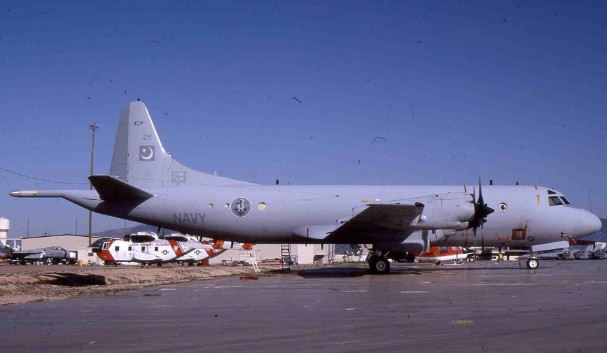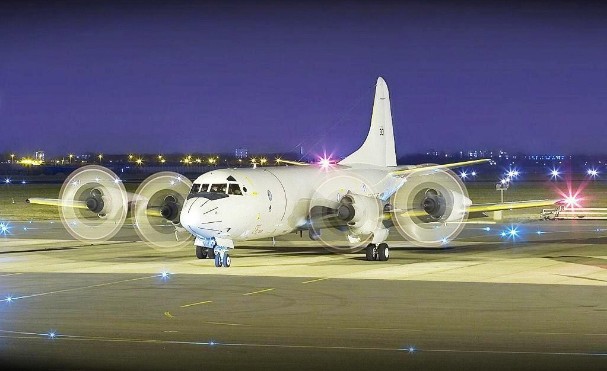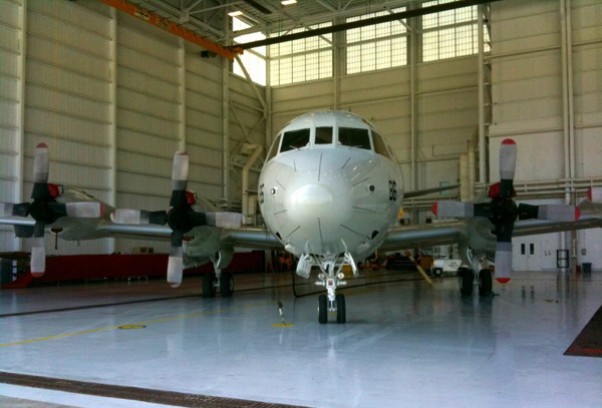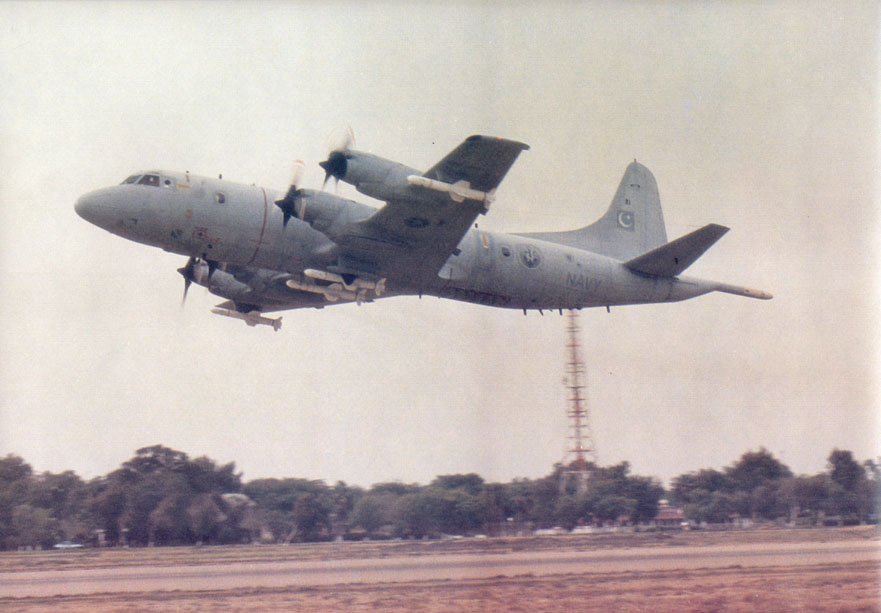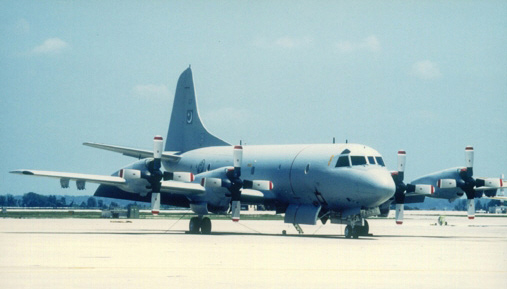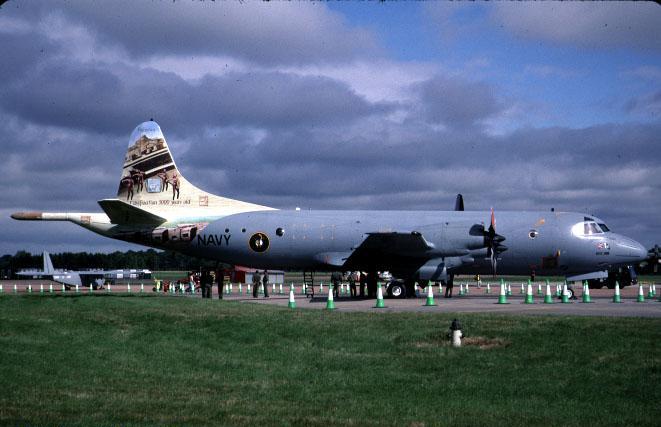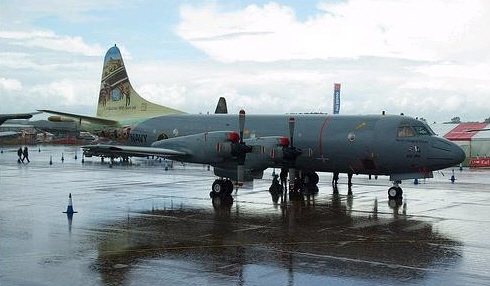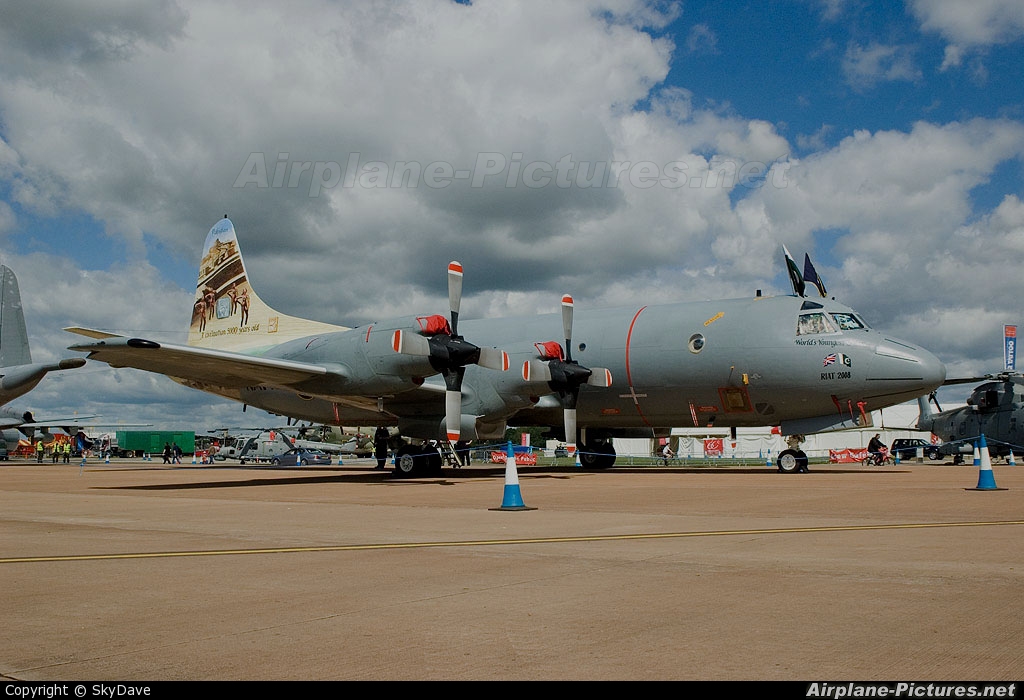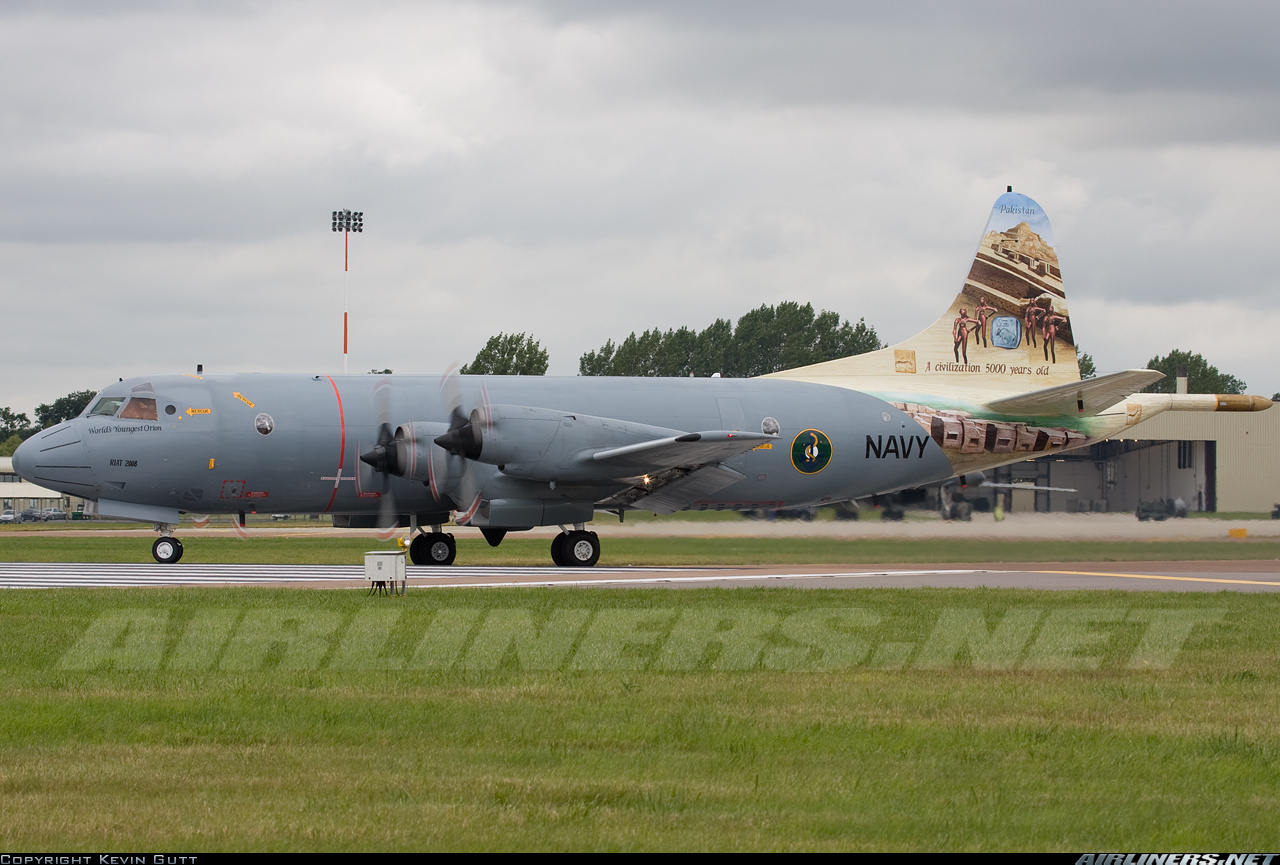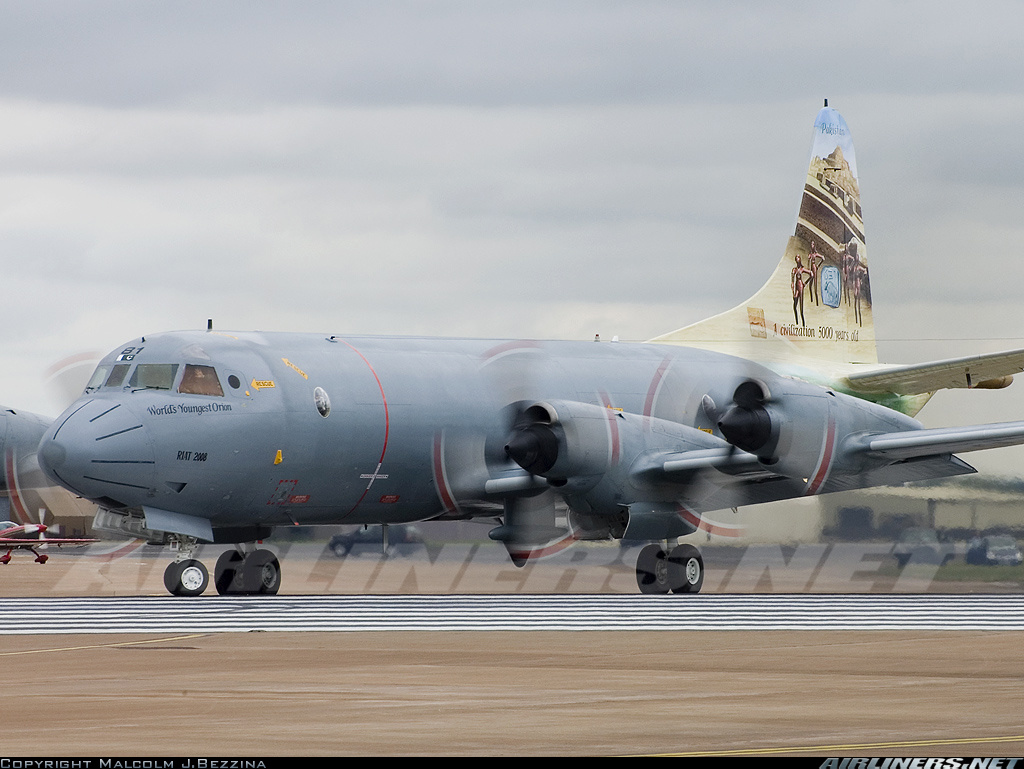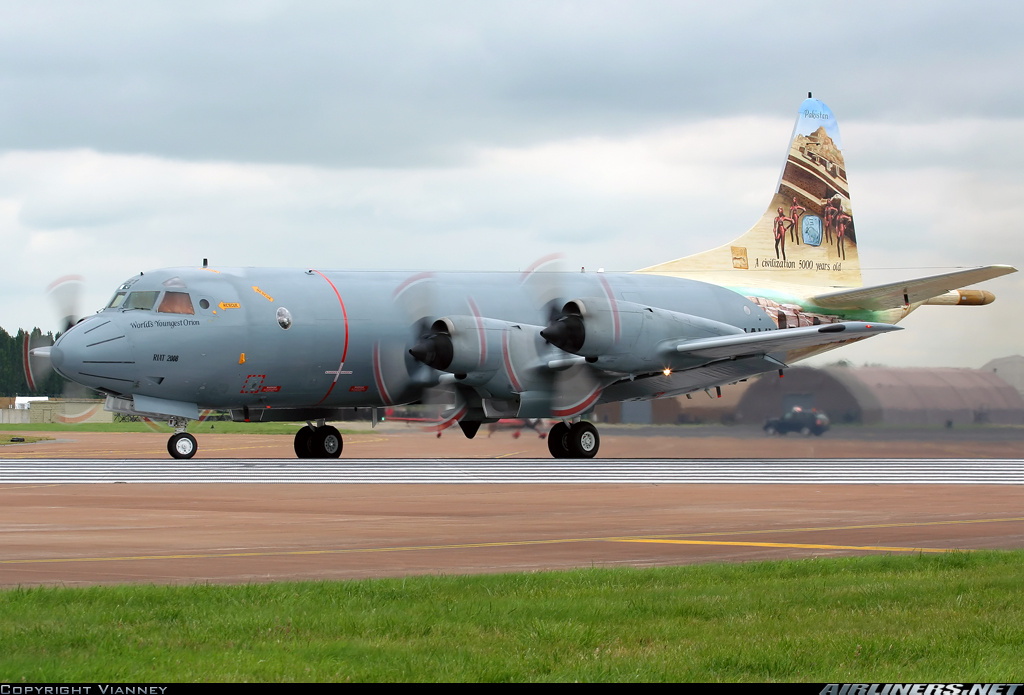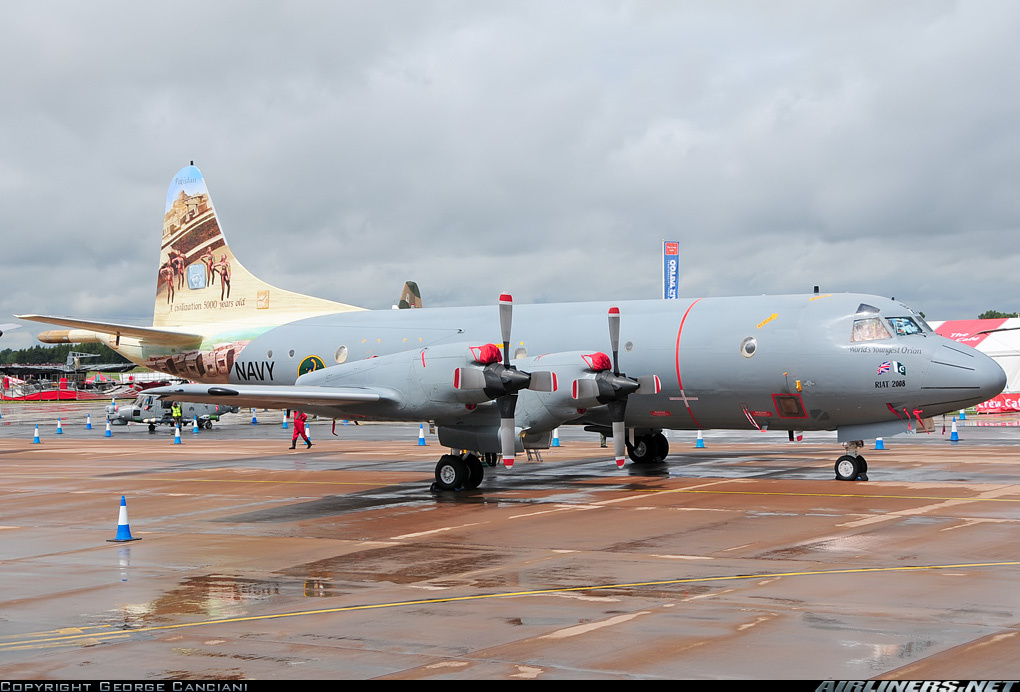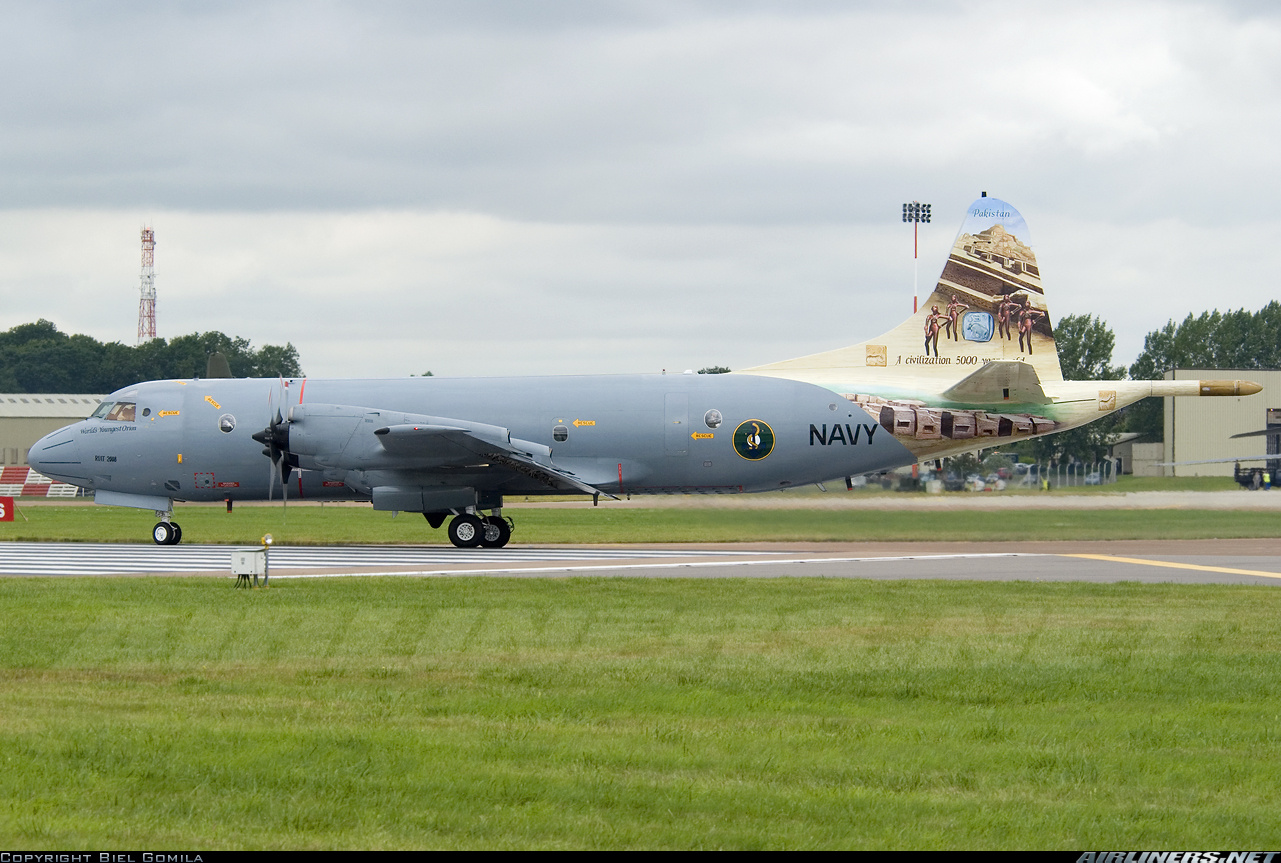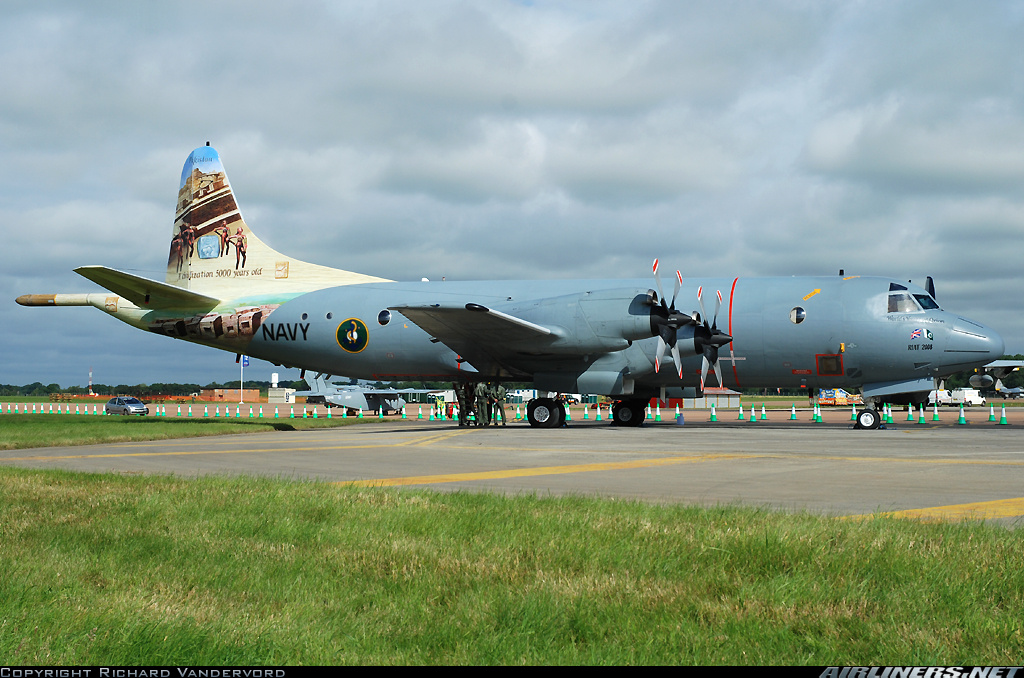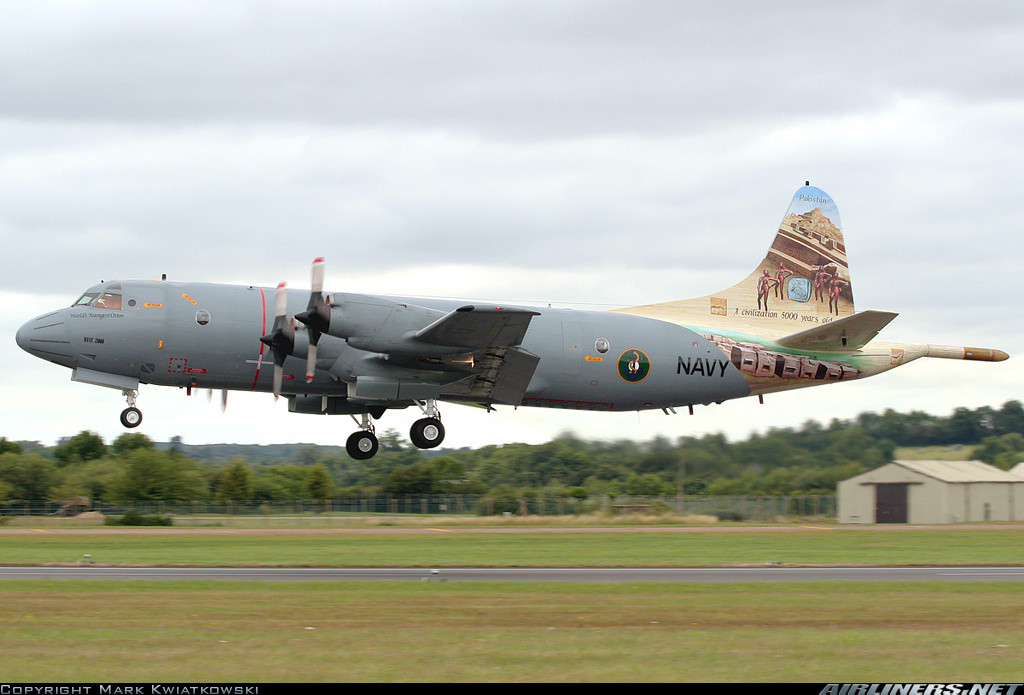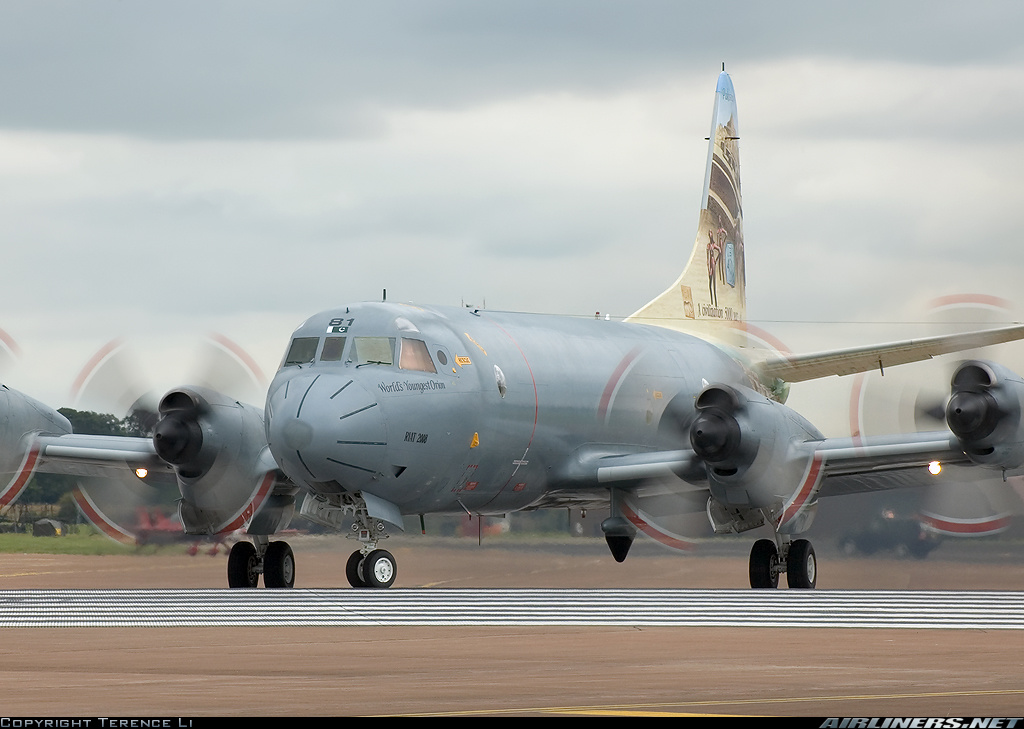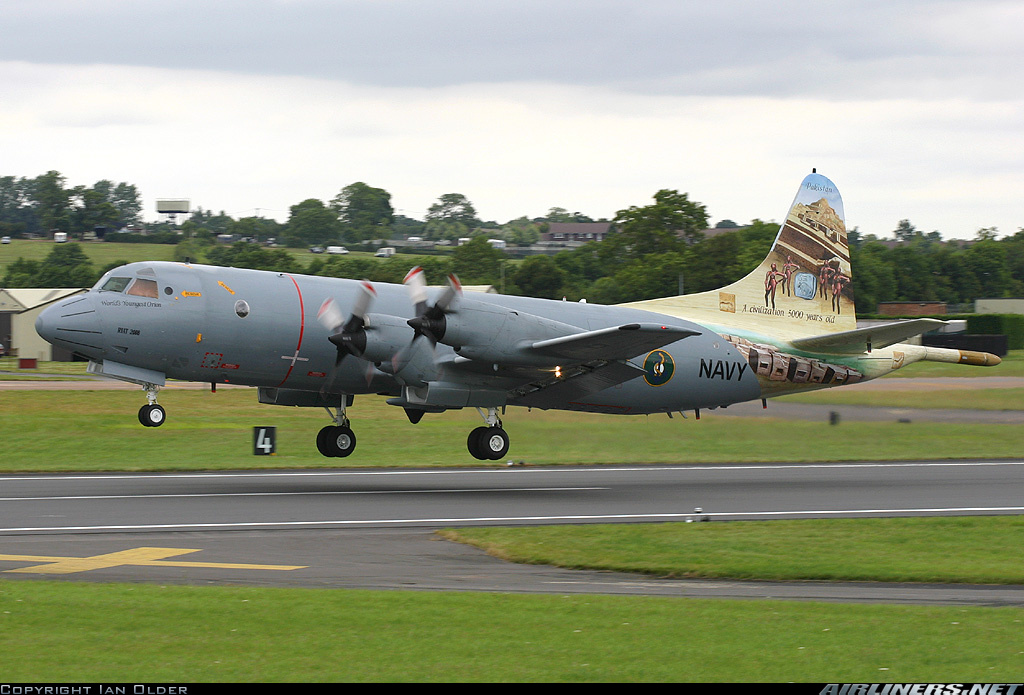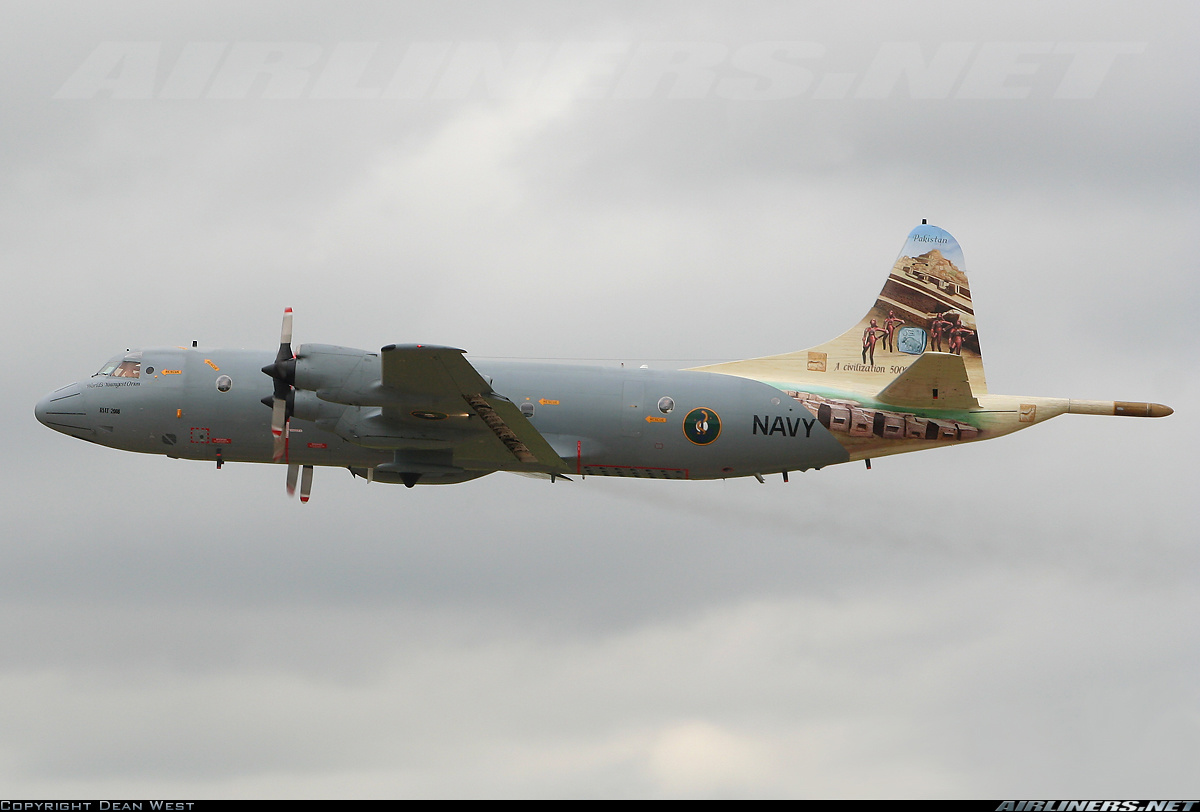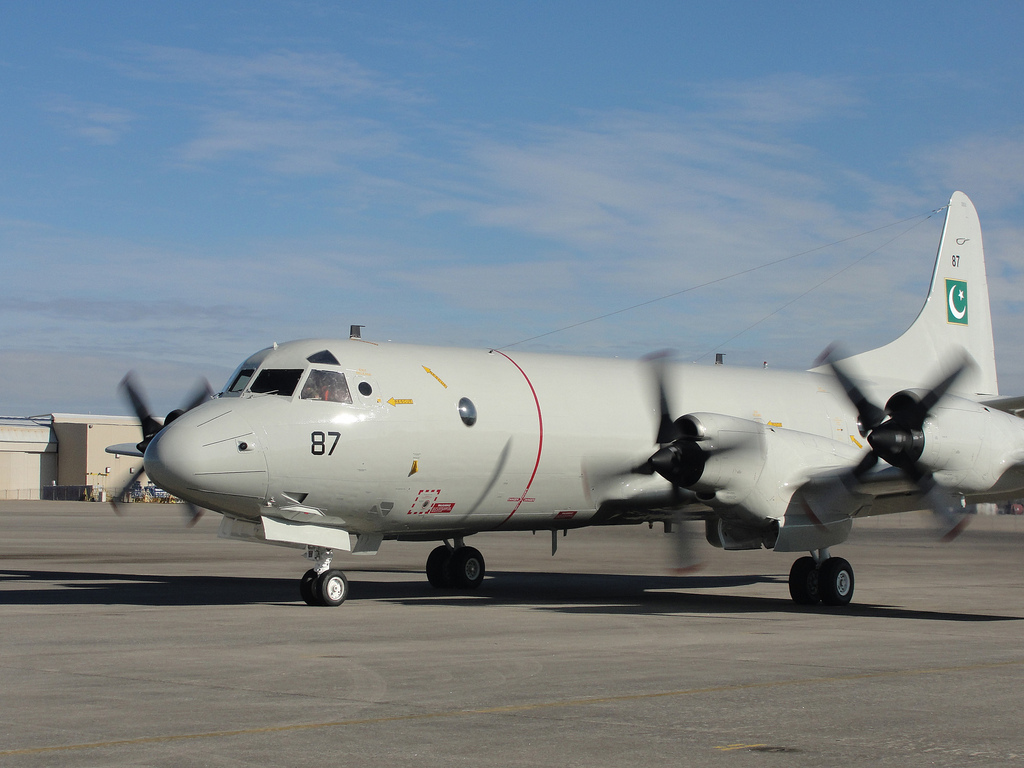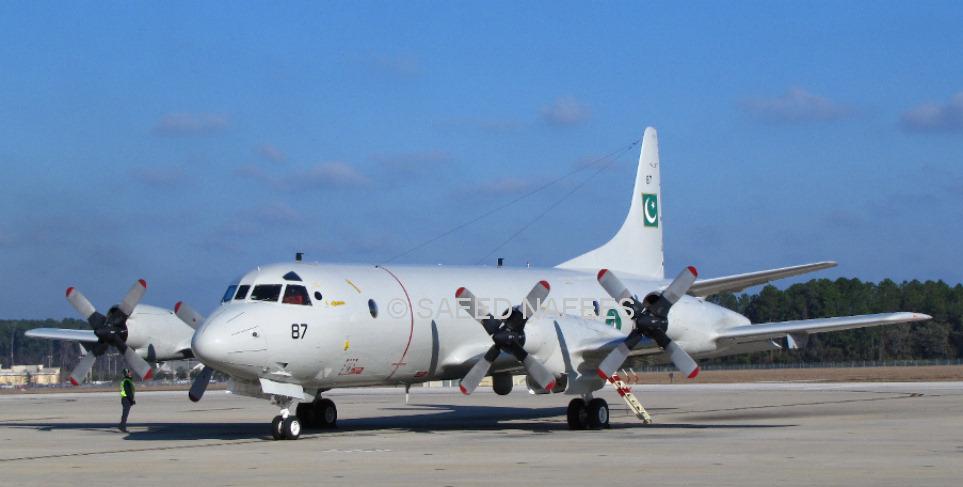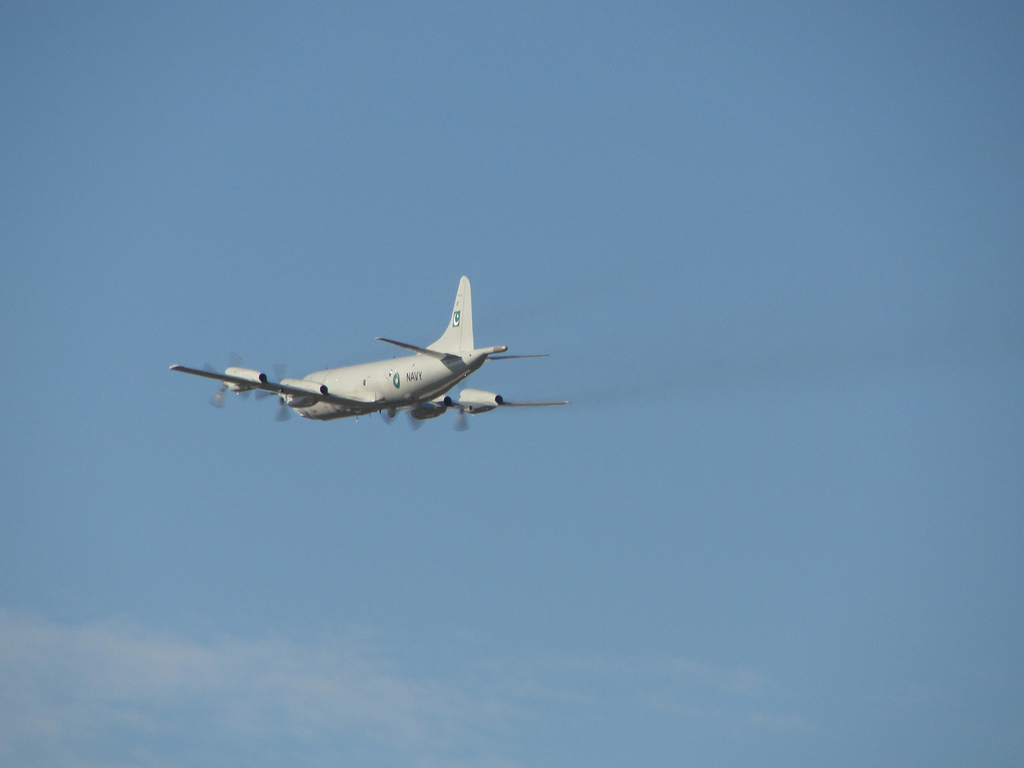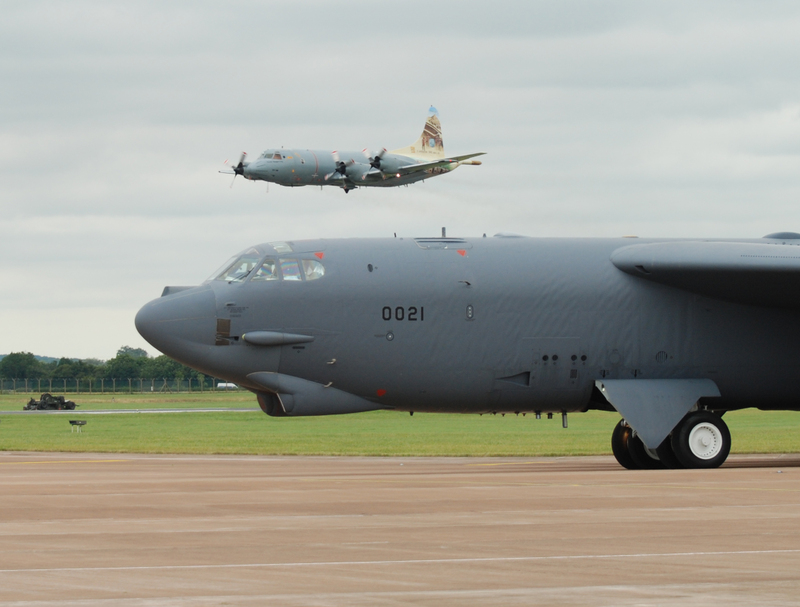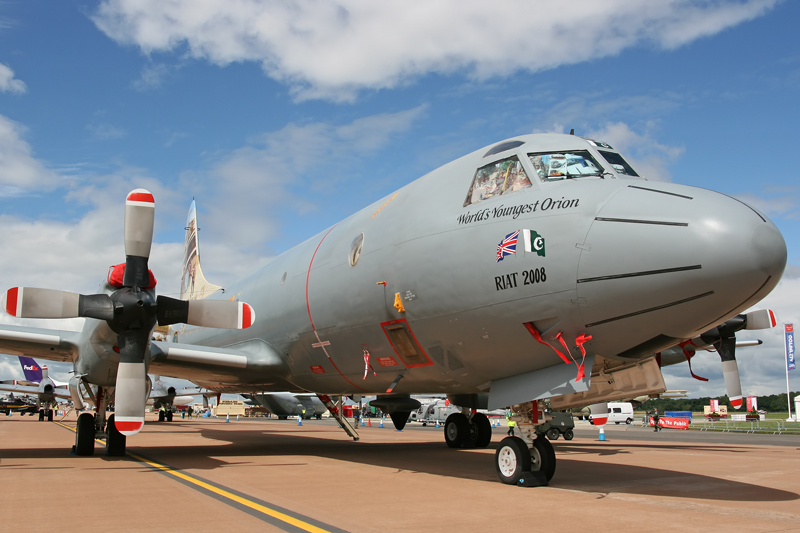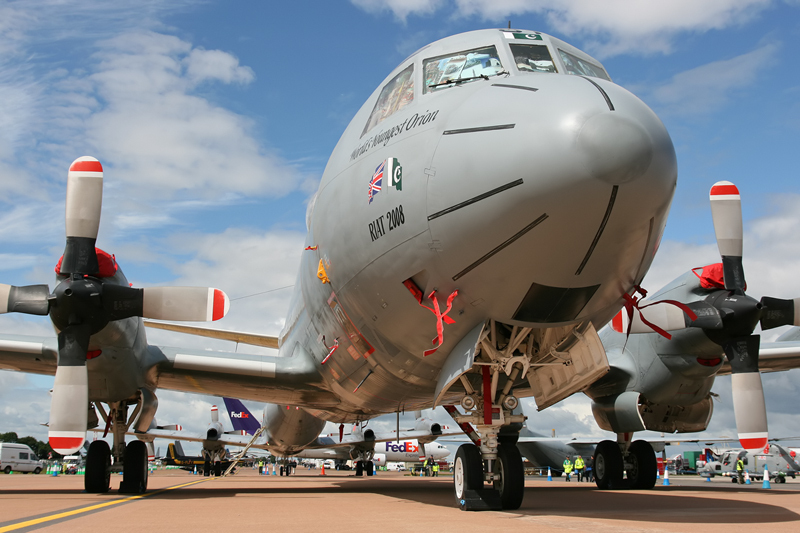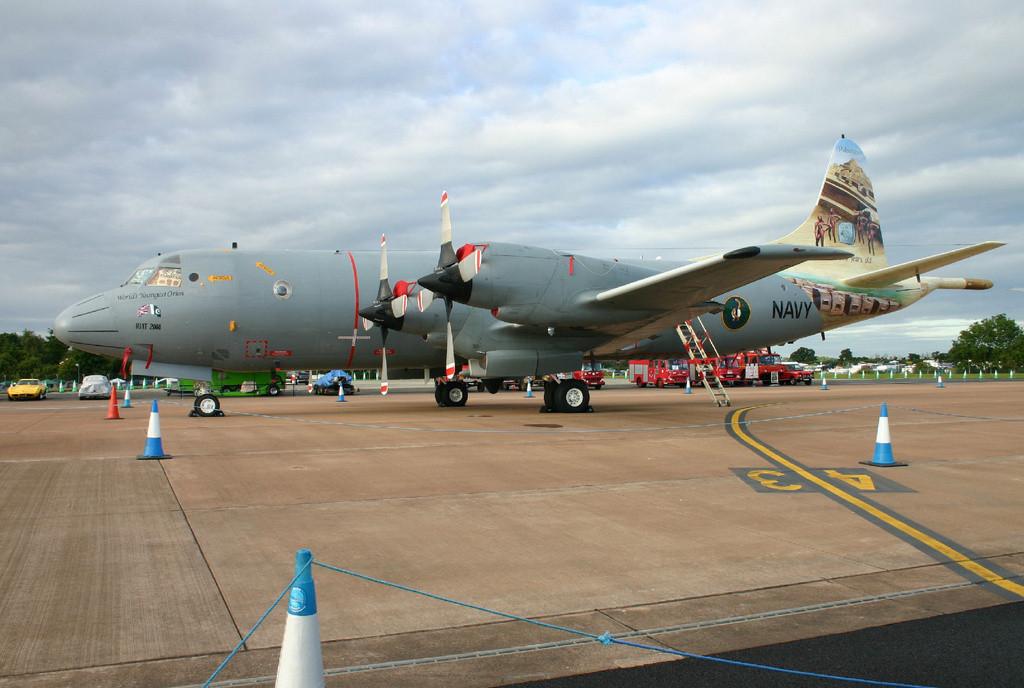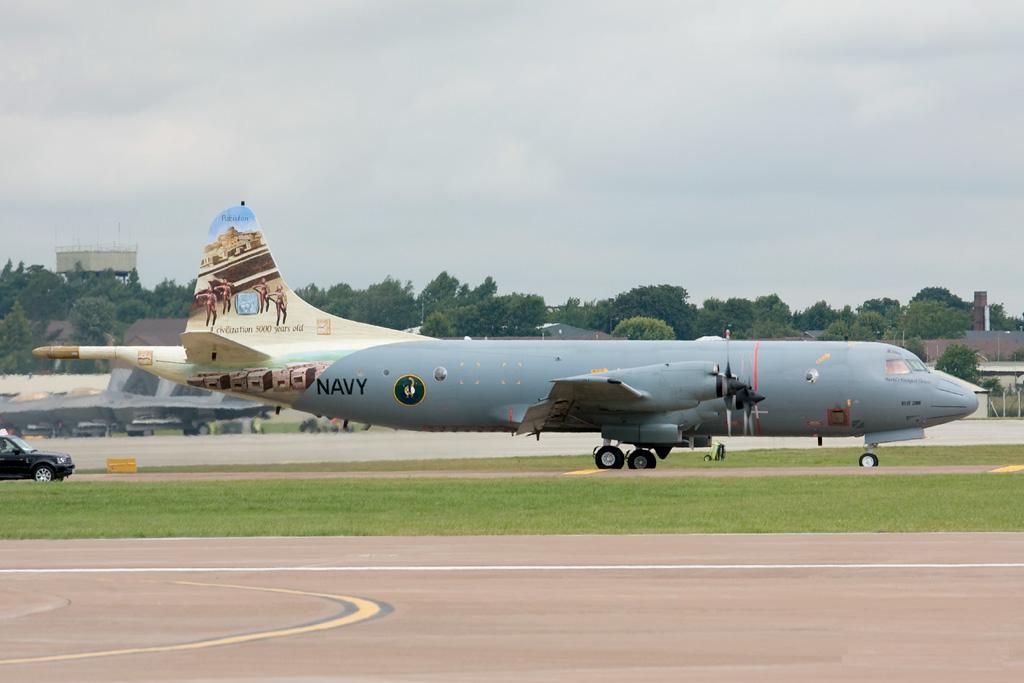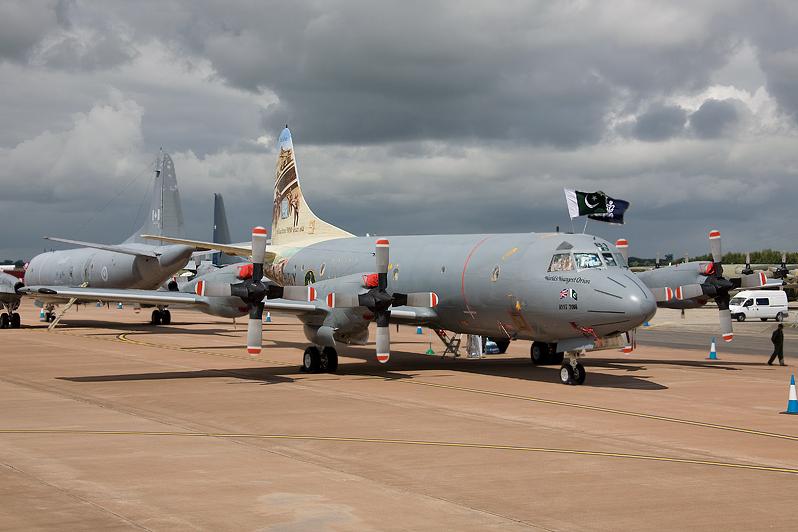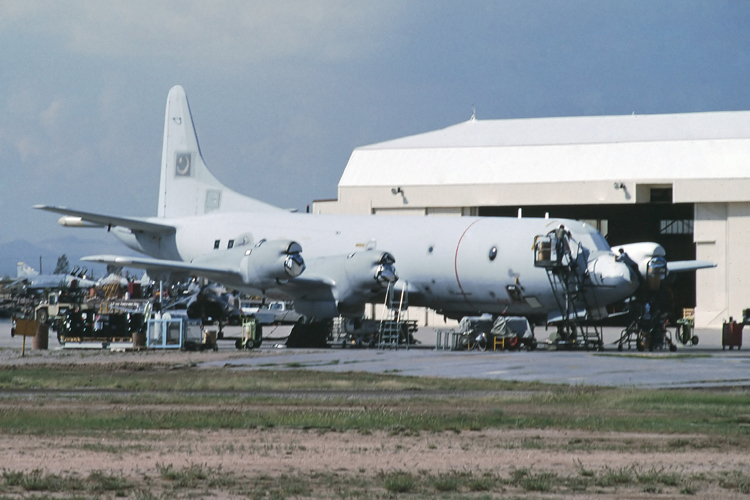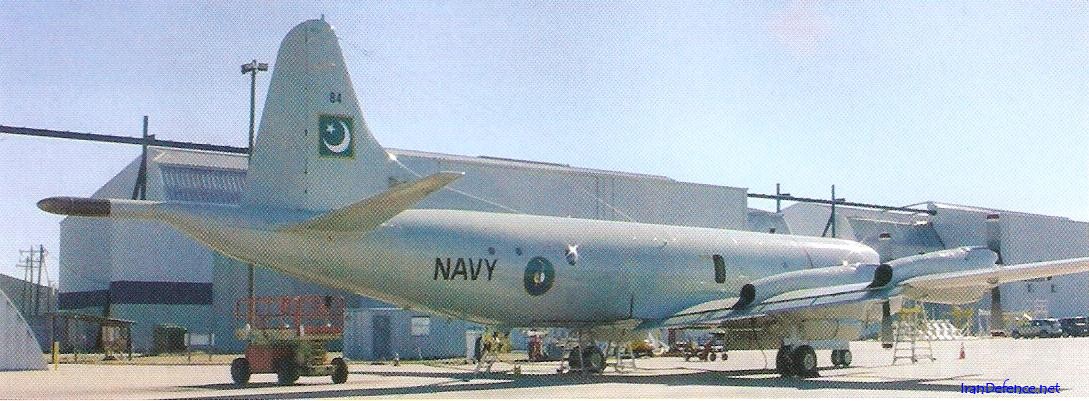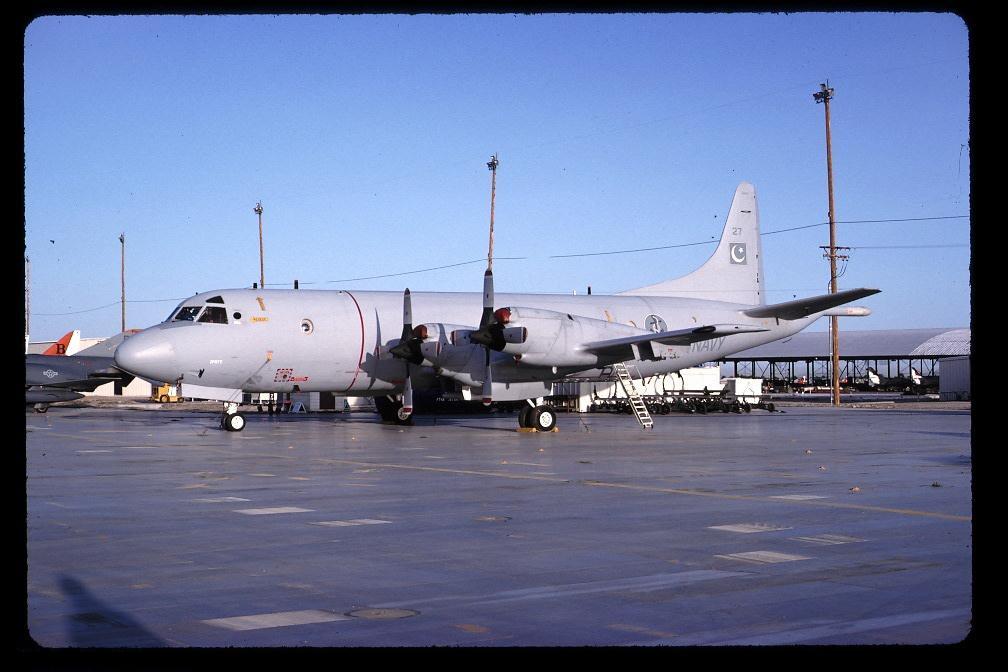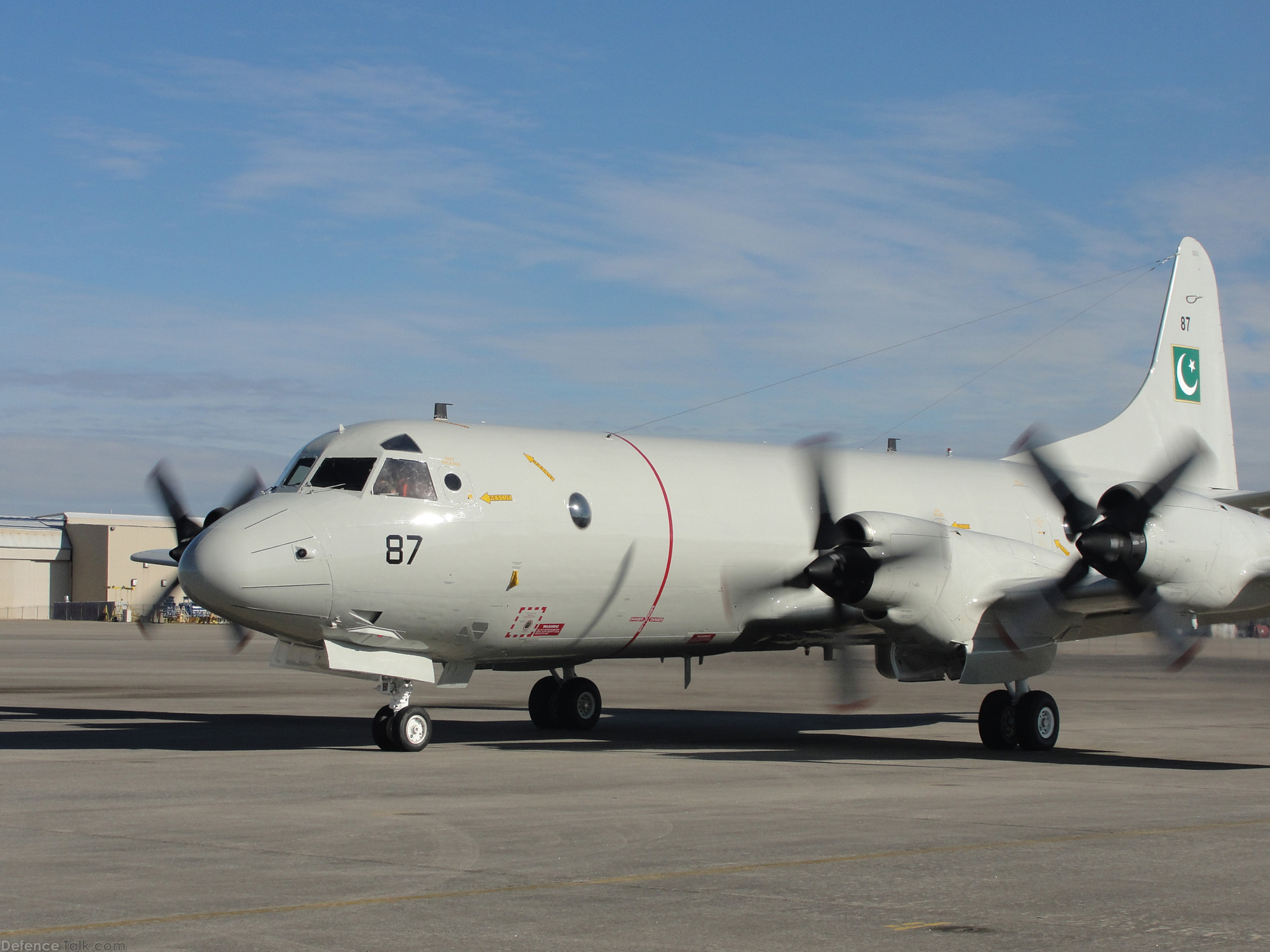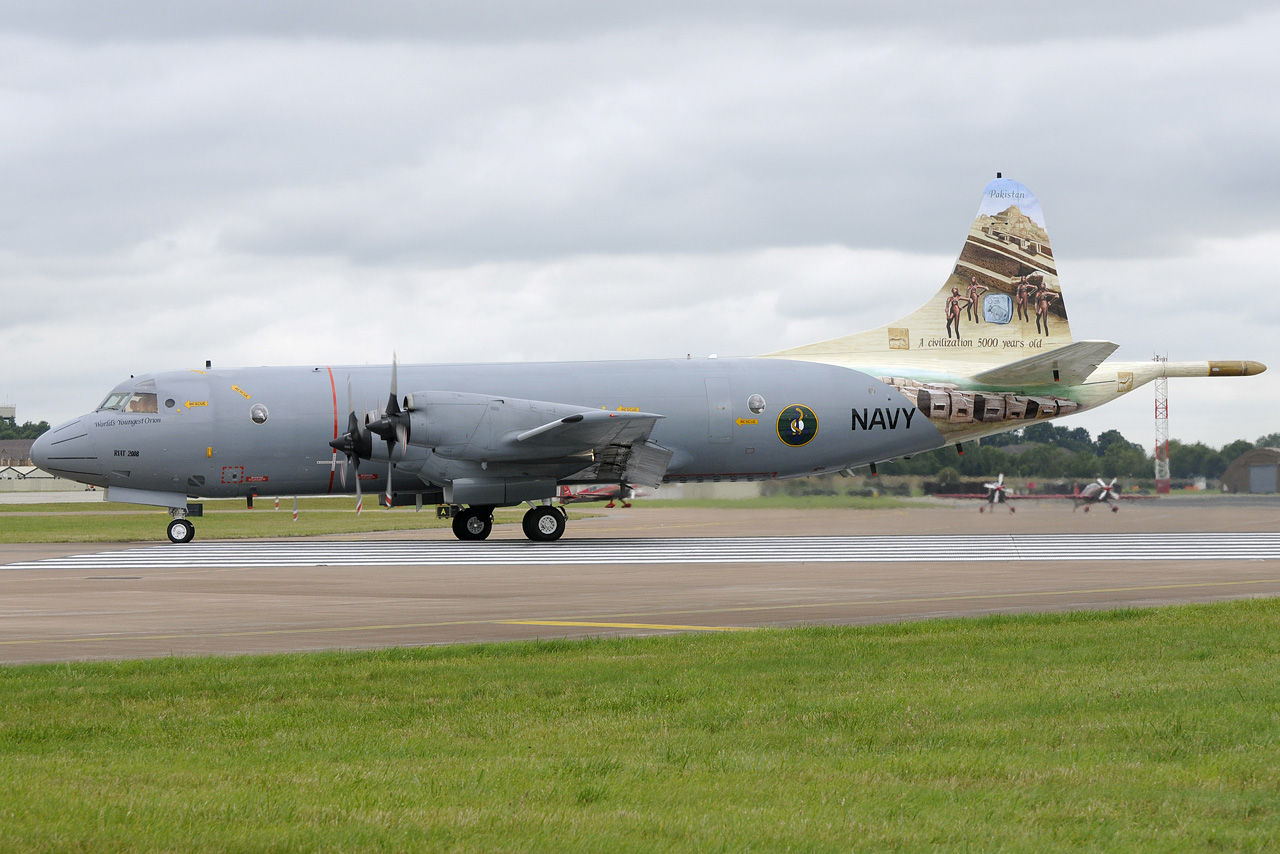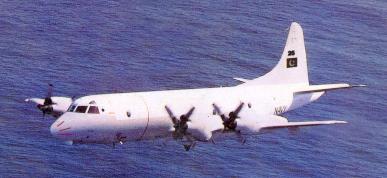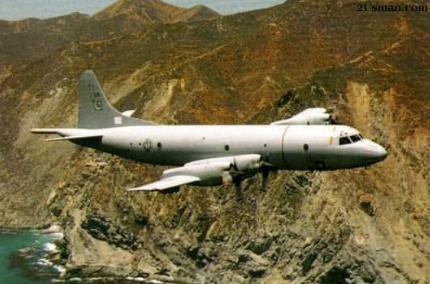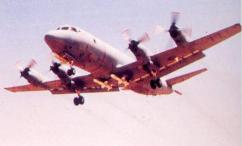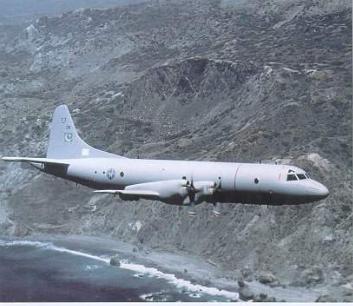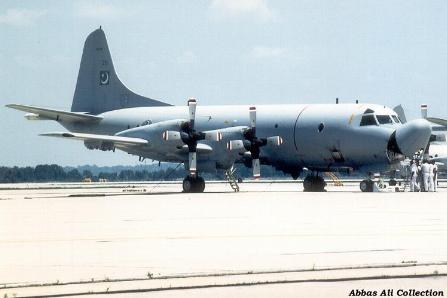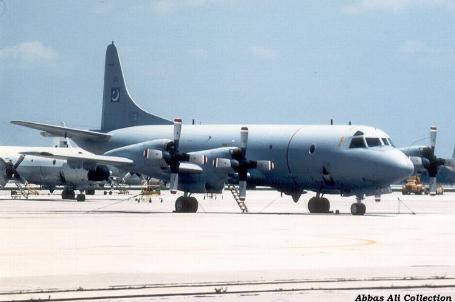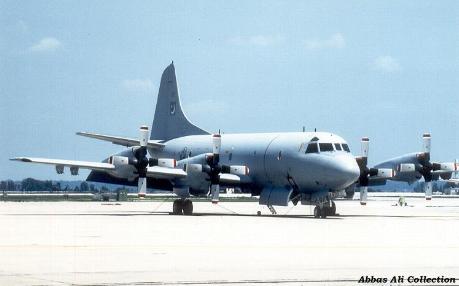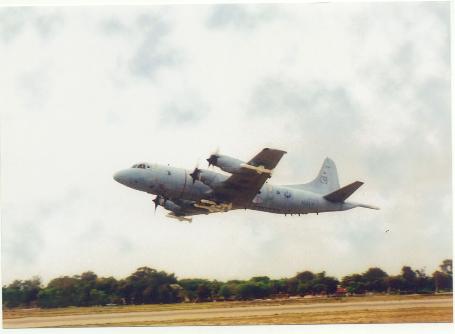LOCKHEED P-3C ORION
LONG RANGE MARITIME PATROL (LRMP)
(? till date)
The Lockheed P-3 Orion is a maritime patrol aircraft used by numerous navies and air forces around the world, primarily for maritime patrol, reconnaissance, anti-surface warfare and anti-submarine. The P-3 Orion, originally designated P3V, is based on the same design philosophy as the Lockheed L-188 Electra. It is not the same aircraft structurally in that it has had 7 ft (2.1 m) of fuselage removed forward of the wings, as well as myriad internal, external, and airframe production technique enhancements.
The P-3 has an internal bomb bay under the front fuselage which can house conventional Mark 50 torpedoes or Mark 46 torpedoes and/or special (nuclear) weapons. Additional under wing stations (hard points), or pylons, can carry other armament configurations including the AGM-84 Harpoon missiles rockets, and various other sea mines, and gravity bombs.
The number of crew on board a P-3 varies depending on the role being flown, the variant being operated, and the country which is operating the aircraft. The normal complement for a P-3C is 10: 3 pilots {Patrol Plane Commander (PPC), Patrol Plane 2nd Pilot (PP2P) & Patrol Plane 3rd Pilot (PP3P)}, 2 Naval Flight Officers {Patrol Plane Tactical Coordinator (PPTC or TACCO) & Patrol Plane Navigator/Communicator (PPNC or NAVCOM)}, 2 Flight Engineers, 3 Sensor Operators {1 Radar/MAD/EWO (SS-3) & 2 Acoustic (SS-1 and SS-2)}, 1 In-Flight Technician (IFT).
On many missions, an engine is shut down (usually the No. 1 engine - the port outer engine) once on station to conserve fuel and extend the time aloft and/or range when at low level. On occasion, both outboard engines can be shut down, aircraft weight, weather, and remaining fuel permitting. Long deep-water, coastal or border patrol missions can last over ten hours and may include extra crew.
Engine 1 is the primary candidate for loiter shutdown because it is the only one without a generator, and is not needed for electrical power. Eliminating the exhaust from engine 1 also improves visibility from the aft observer station on the port side of the aircraft. On occasion, both outboard engines can be shut down, aircraft weight, weather, and remaining fuel permitting. Long deep-water, coastal or border patrol missions can last over ten hours and may include extra crew. The record time aloft for a P-3 is a 21.5 hour flight undertaken by the Royal New Zealand Air Force’s No. 5 Squadron in 1972.
28 ASW squadron of Pakistan Navy operates 10 P-3C Orion. These aircraft support anti-ship and anti-submarine warfare missions and will enhance Pakistan's ability to conduct maritime surveillance in littoral and deep-water environments. The aircraft are designed to have a single integrated tactical picture of the battle space, drawing upon data from aircraft sensors and information from other platforms.
